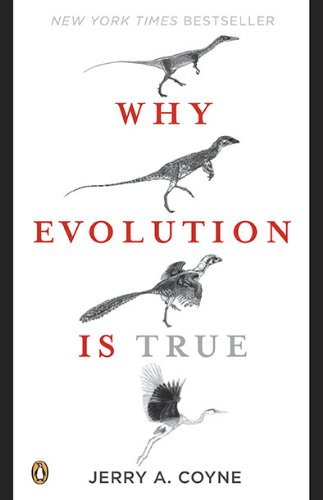Human Race Differences the Result of Sexual Selection
Most of the genetic differences between races are trivial. And yet others, those physical differences between a Japanese individual and a Finn, a Masai, and an Inuit, are striking. We have the interesting situation, then, that the overall differences in gene sequences between peoples are minor, yet those same groups show dramatic differences in a range of visually apparent traits, such as skin color, hair color, body form, and nose shape. These obvious physical differences are not characteristic of the genome as a whole. So why has the small amount of divergence that has occurred between human populations become focused on such visually striking traits?
Some of these differences make sense as adaptations to the different environments in which early humans found themselves. The darker skin of tropical groups probably provides protection from intense ultraviolet light that produces lethal melanomas, while the pale skin of higherlatitude groups allows penetration of light necessary for the synthesis of essential vitamin D, which helps prevent rickets and tuberculosis. But what about the eye folds of Asians, or the longer noses of Caucasians? These don’t have any obvious connection to the environment. For some biologists, the existence of greater variation between races in genes that affect physical appearance, something easily assessed by potential mates, points to one thing: sexual selection.
Apart from the characteristic pattern of genetic variation, there are other grounds for considering sexual selection as a strong driving force for the evolution of races. We are unique among species for having developed complex cultures. Language has given us a remarkable ability to disseminate ideas and opinions. A group of humans can change their culture much faster than they can evolve genetically. But the cultural change can also produce genetic change. Imagine that a spreading idea or fad involves the preferred appearance of one’s mate. An empress in Asia, for example, might have a penchant for men with straight black hair and almond-shaped eyes. By creating a fashion, her preference spreads culturally to all her female subjects, and, lo and behold, over time the curlyhaired and round-eyed individuals will be largely replaced by individuals with straight black hair and almond-shaped eyes. It is this “gene-culture coevolution”—the idea that a change in cultural environment leads to new types of selection on genes—that makes the idea of sexual selection for physical differences especially appealing.
Notes:
Cultural norms in different societies probably shaped many of the physical differences we see between races today, different definitions of beauty.
Folksonomies: memetics culture beauty sexual selection
Taxonomies:
/business and industrial (0.491607)
/health and fitness/therapy/physical therapy (0.464959)
/science/biology (0.364922)
Keywords:
physical differences (0.996148 (negative:-0.242252)), sexual selection (0.838792 (positive:0.527143)), straight black hair (0.780083 (positive:0.363984)), Human Race Differences (0.741139 (neutral:0.000000)), obvious physical differences (0.724032 (negative:-0.521330)), Selection Cultural norms (0.591974 (neutral:0.000000)), genetic differences (0.583193 (negative:-0.677656)), visually apparent traits (0.559043 (neutral:0.000000)), dramatic differences (0.543958 (neutral:0.000000)), overall differences (0.539157 (negative:-0.234315)), almond-shaped eyes (0.528492 (positive:0.363984)), strong driving force (0.505023 (positive:0.489064)), lethal melanomas (0.401188 (negative:-0.593227)), Japanese individual (0.399247 (neutral:0.000000)), interesting situation (0.398074 (neutral:0.000000)), obvious connection (0.395955 (negative:-0.298511)), different societies (0.395768 (neutral:0.000000)), different definitions (0.394233 (positive:0.447623)), darker skin (0.393431 (positive:0.445303)), human populations (0.387314 (negative:-0.297605)), nose shape (0.387235 (neutral:0.000000)), early humans (0.385251 (neutral:0.000000)), body form (0.384906 (neutral:0.000000)), skin color (0.383965 (positive:0.293784)), hair color (0.383836 (positive:0.279130)), characteristic pattern (0.383407 (neutral:0.000000)), intense ultraviolet (0.381681 (positive:0.541006)), physical appearance (0.381419 (neutral:0.000000)), genetic variation (0.380731 (neutral:0.000000)), greater variation (0.380521 (neutral:0.000000))
Entities:
Asia:Continent (0.707747 (positive:0.275660)), Finn:Person (0.603447 (neutral:0.000000)), vitamin D:FieldTerminology (0.536636 (positive:0.572351)), ultravioletlight:FieldTerminology (0.482980 (positive:0.541006))
Concepts:
Human skin color (0.948131): dbpedia | freebase
Ultraviolet (0.842026): dbpedia | freebase | opencyc
Human (0.770101): dbpedia | freebase | opencyc
Race (0.763443): dbpedia | yago
Natural selection (0.720292): dbpedia | freebase
Genetics (0.694093): dbpedia | freebase | opencyc
DNA (0.641519): website | dbpedia | freebase | yago
Culture (0.613005): dbpedia | freebase | opencyc





